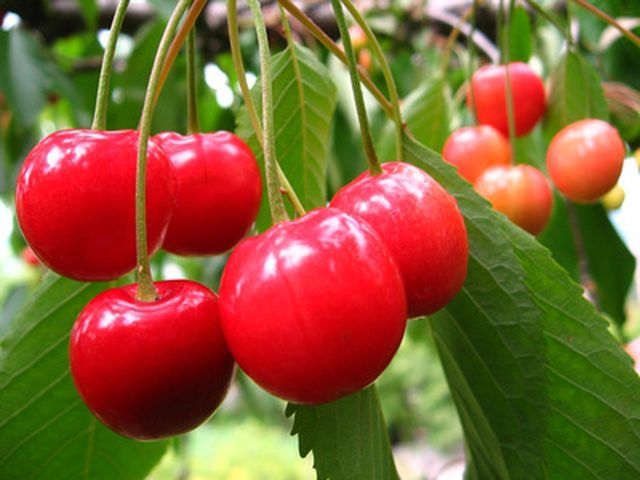Bulbs
Flower Basics
Flower Beds & Specialty Gardens
Flower Garden
Garden Furniture
Garden Gnomes
Garden Seeds
Garden Sheds
Garden Statues
Garden Tools & Supplies
Gardening Basics
Green & Organic
Groundcovers & Vines
Growing Annuals
Growing Basil
Growing Beans
Growing Berries
Growing Blueberries
Growing Cactus
Growing Corn
Growing Cotton
Growing Edibles
Growing Flowers
Growing Garlic
Growing Grapes
Growing Grass
Growing Herbs
Growing Jasmine
Growing Mint
Growing Mushrooms
Orchids
Growing Peanuts
Growing Perennials
Growing Plants
Growing Rosemary
Growing Roses
Growing Strawberries
Growing Sunflowers
Growing Thyme
Growing Tomatoes
Growing Tulips
Growing Vegetables
Herb Basics
Herb Garden
Indoor Growing
Landscaping Basics
Landscaping Patios
Landscaping Plants
Landscaping Shrubs
Landscaping Trees
Landscaping Walks & Pathways
Lawn Basics
Lawn Maintenance
Lawn Mowers
Lawn Ornaments
Lawn Planting
Lawn Tools
Outdoor Growing
Overall Landscape Planning
Pests, Weeds & Problems
Plant Basics
Rock Garden
Rose Garden
Shrubs
Soil
Specialty Gardens
Trees
Vegetable Garden
Yard Maintenance
How to Grow Cherry Trees in California
How to Grow Cherry Trees in California. California is a top cherry producing state, though cherries thrive only in areas such as Central Coast, San Joaquin Valley and Sierra Nevada foothill areas that meet minimum "winter chill" requirements. Home gardeners elsewhere can succeed growing tart and sweet cherries, though cherries are more challenging...

California is a top cherry producing state, though cherries thrive only in areas such as Central Coast, San Joaquin Valley and Sierra Nevada foothill areas that meet minimum "winter chill" requirements. Home gardeners elsewhere can succeed growing tart and sweet cherries, though cherries are more challenging than most other fruit trees. A sunny, gentle slope that allows cold winter air to settle in nearby low spots can be ideal for growing cherries. Deep, sandy loam also is best, though cherries will grow in rocky or poor soils as long as there is adequate overall drainage.
Things You'll Need
PH test kit
Sulfur or lime, if needed
Compost, well-rotted manure, leaves or other organic matter
Motorized tiller
Garden shovel
Garden gloves
1-year-old sweet or tart cherry trees
Shredded leaves, straw or other mulch
Long-handled loppers
Bypass-style hand pruners
Nitrogen fertilizer or composted chicken manure
Prepare the soil at least one year before planting. Test the soil pH. Add any amendments as needed to achieve a slightly acidic soil, in the 6.2 to 6.8 range. Add sulfur in recommended amounts if the soil is too alkaline, or lime if it's too acidic. Add organic matter even if pH is ideal, spreading it to a thickness of 3 to 4 inches across the entire planting area. Cultivate deeply to mix soil thoroughly with all amendments.
Plant cherry cultivars that do well in California, including tart or "pie cherry" trees such as Early Richmond, North Star, Meteor and Montmorency. Plant sweet or "eating cherry" cultivars only with compatible cross-pollinating trees; possible combinations for California include Bing, Black Tartarian and Early Burlat; Van and Bing; and Van and Royal Ann.
Plant well-grown 1-year-old trees as early in spring as the ground can be worked. Dig a planting hole twice as wide as tree roots but no deeper. Place the tree in the center of the hole. Fill the hole 2/3 of the way with soil. Water thoroughly to settle that soil. Finish filling the hole and water again.
Prune minimally at planting but enough to ensure that the trees are well-started in the modified leader style. Remove all branches that form narrow angles with the central leader. Cut back the central stem or leader to about 30 or 40 inches above ground to force lateral branches to develop.
Provide regular care for young trees. Irrigate when weather warms and trees are growing, providing at least 5 to 10 gallons of water per week per tree--more in very hot weather. Spread mulch in a doughnut configuration, with the young tree at the center of the doughnut hole. Mulch to a depth of 4 inches within the tree's dripline, or the outer edge of its leaf canopy. Keep the mulch from touching the tree trunk.
Continue training the cherries in the modified leader style--the preferred pruning approach for cherries--in early spring, when trees are dormant. Work to achieve strong scaffold branching all the way around the tree.
Protect against spring frosts, which can damage blossoms and developing fruit. Cover backyard trees with polyethylene tarps on freezing nights--tie tarps down to prevent them from blowing off--and add heat. Place a kerosene lantern or electrical heater beneath the tarp, or hang a 60- to 100-watt light bulb inside the tree canopy as a supplementary heat source. Remove the tarp during the day.
Tips & Warnings
If in doubt about whether cherries will do well in your garden, ask a master gardener, who can suggest cultivars and advise you about how to prevent and treat diseases and pests.
Drip irrigation is ideal for cherries, keeping roots evenly moist yet not inundating sensitive roots.
Once established, cherry trees usually need only nitrogen fertilizer.
As fruit ripens, net the trees to prevent birds from harvesting the cherries.
Tart or "pie cherry" cultivars require no cross-pollination.
Among sweet cherry cultivars, only Stella is "self-fruitful," requiring no other tree varieties for cross-pollination.
Wet feet to a cherry tree can cause plant diseases and death.